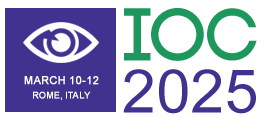Title : A factorial randomized controlled trial of tissue plasminogen activator and/or perfluoropropane for the treatment of submacular hemorrhage secondary to neovascular age-related macular degeneration (TAPAS)
Abstract:
Aim: To consider the presentation, management options, and randomised controlled trials investigating submacular haemorrhage (SMH) secondary to neovascular age-related macular degeneration (AMD), with a focus on the use of tissue plasminogen activator (TPA) and pneumatic displacement, delivered via intravitreal injection or vitrectomy.
Methods: Systematic review of the literature, and appraisal of a 24-participant pilot randomised controlled trial (RCT) comparing intravitreal TPA and gas versus surgery (both groups received bevacizumab), a 56-participant factorial RCT (TAPAS) comparing intravitreal TPA, gas, TPA+gas, and sham (all four groups received ranibizumab), and a 90-participant superiority RCT (STAR) comparing intravitreal TPA and gas versus surgery (both groups received ranibizumab). A 210-participant superiority RCT (TIGER) is also underway, comparing surgery plus aflibercept versus aflibercept monotherapy.
Results: The systematic review revealed three main treatment strategies: intravitreal anti-vascular endothelial growth factor (VEGF) monotherapy; intravitreal TPA, gas and anti-VEGF therapy; vitrectomy, subretinal TPA, gas and anti-VEGF therapy. All three options gave visual acuity (VA) results much better than the natural history. Patients undergoing surgery tended to have larger SMH with worse presenting VA. The pilot RCT was not designed to establish superiority, but found both intravitreal treatment and surgery were very effective in reducing SMH size at week 6. On factorial analysis, TAPAS found that the combined intravitreal TPA groups had significantly better month 3 mean logarithm of the minimum angle of resolution VA than those not receiving TPA: 0.66 vs 0.98 (95% confidence interval, -0.58 to -0.07; P = 0.02). Gas did not significantly improve VA versus no gas. STAR did not establish superiority of surgery over intravitreal treatment (p=0.77), with the surgery group gaining +16.8 letters at month 3, versus +16.4 letters with gas. Although the intravitreal and surgery primary outcomes were similar, the results and study design did not establish equivalence (95% confidence interval of difference between groups -14.9 to +11.0 letters). TIGER is past the midpoint of recruitment.
Conclusions: SMH is treated in a variety of ways, ranging from anti-VEGF monotherapy to vitrectomy. Although there is no direct comparison, historic series suggest the natural history is much worse than anti-VEGF therapy. It is not known if surgery or intravitreal TPA is better, but it is hoped that TIGER will establish how surgery compares to anti-VEGF monotherapy.



